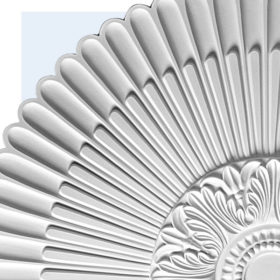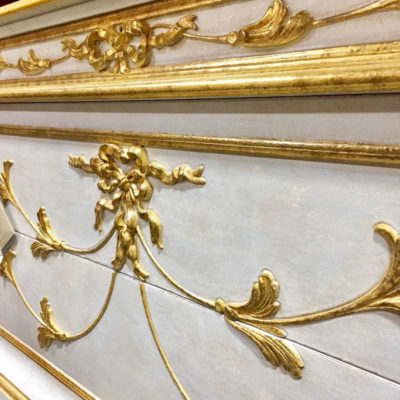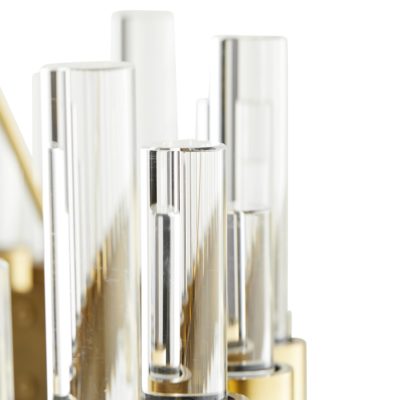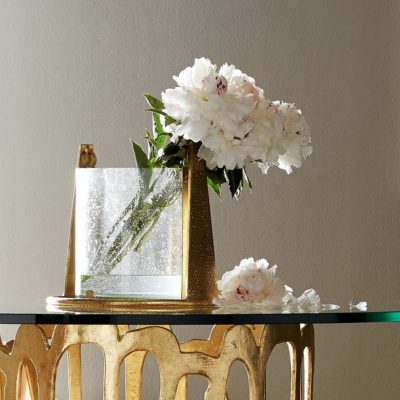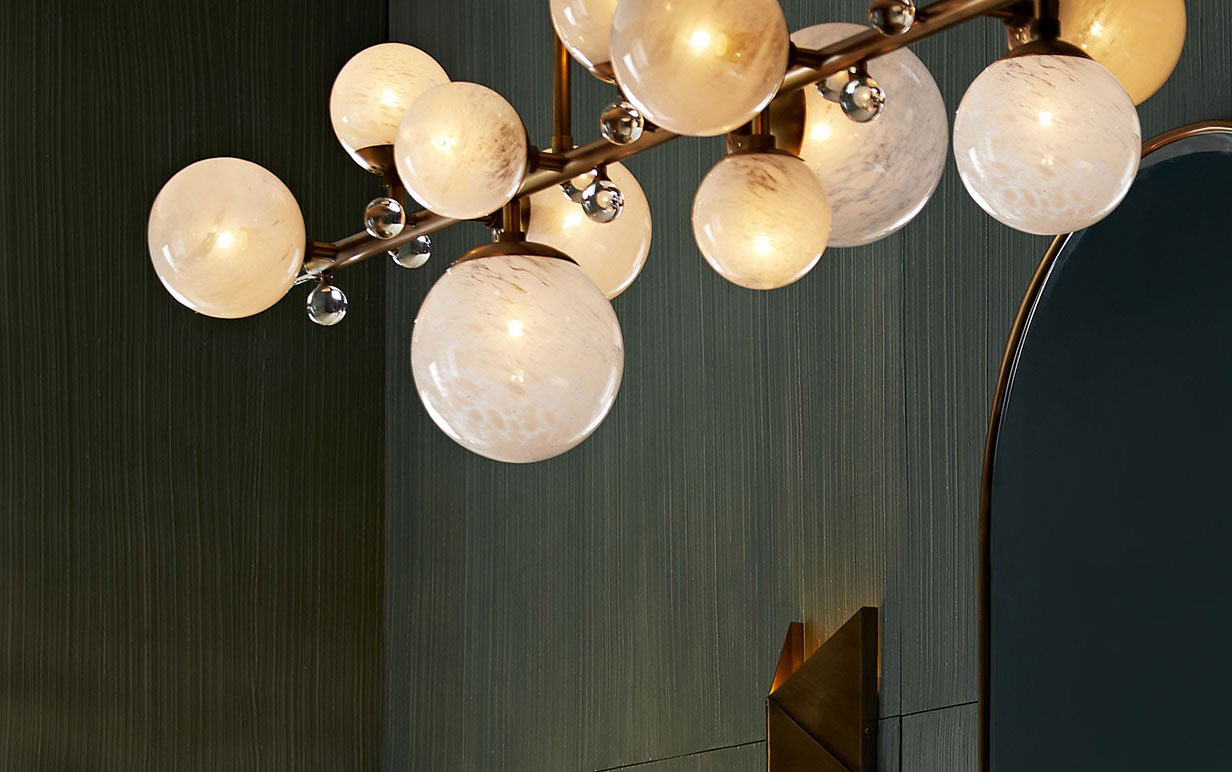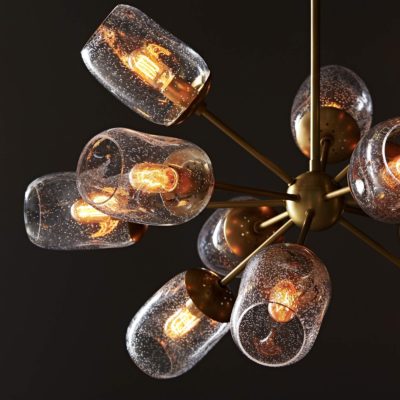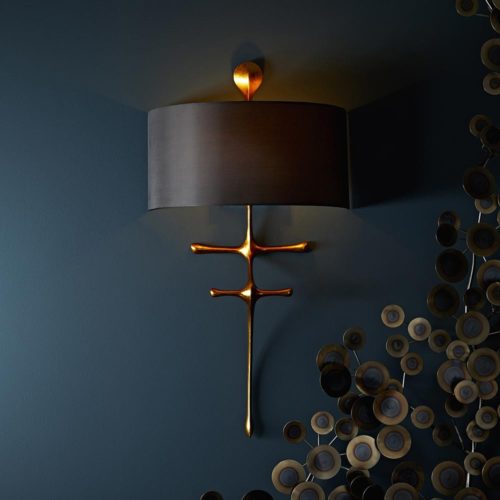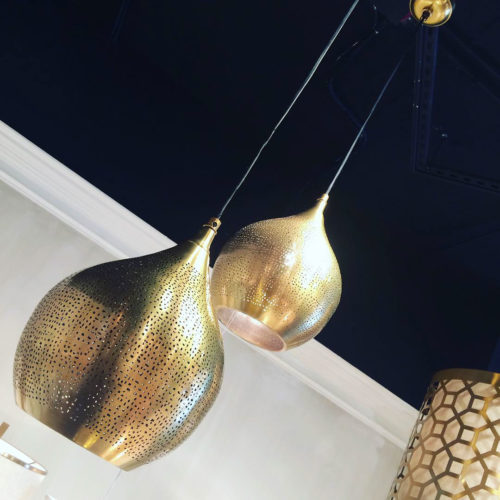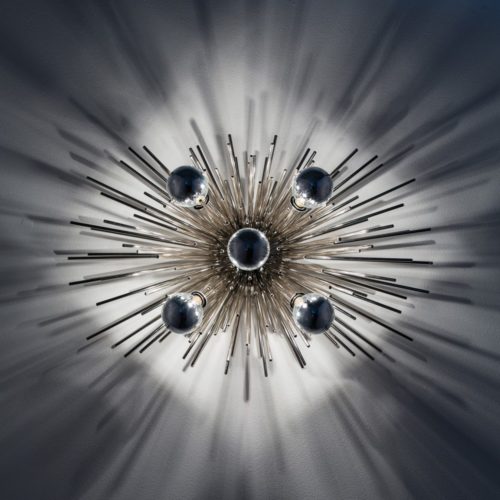Selecting Lighting Fixtures
Skillful application of lighting and selection of lighting fixtures can, more than any other element in the architectural environment, affect the experience of the viewer.
Lighting fixtures themselves can be used to dramatize elements of interior design – line, form, color, pattern, and texture. Higher levels of lighting produce cheerful effects and stimulate people to alertness and activity, whereas lower levels of light tend to create an atmosphere of relaxation, intimacy, and restfulness.
There is practically an endless number of lighting-fixture styles designed to match any decor and catch everyone’s imagination. The past few years have proved to be a lighting designer’s dream, as fixtures become more decorative and lighting schemes more varied and eclectic.
From nostalgic reproductions to architecture-inspired designs and contemporary styles, fixtures suit any look, and take the form of sconces, lamps, chandeliers, lanterns, built-in lighting, track lighting, ceiling lighting fixtures, and novelty types like rope lighting and LED lights – and they can in any finish imaginable.
The wide selection of finishes offers lots of excitement, too. Look for everything from enamel to brass, chrome, pewter, nickel, and copper, which can be brushed, matted, or antiqued. There are also vintage designs in wrought iron and verdigris. For added interest, select fixtures with a combination of finishes, such as verdigris with antiqued brass or copper paired with wrought iron. Whatever you choose, stick to a style that is compatible with other decorative elements in the room.
Lighting Qualities
Lighting can be “soft” or “hard.” Soft lighting is diffused light that minimizes harsh shadows and provides a more relaxing and less visually compelling atmosphere. Too much-diffused lighting lacks interest and makes a room look dull.
Careful use of “hard” or direct lighting fixtures can provide highlights and shadows, model form, and emphasis texture. Usually, direct lighting is not used as a primary source of illumination, but rather as a supplement.
Lighting fixtures should be proportioned to the scale of the furnishings, height of ceiling, and size of the room. Looking at extremes, a large dominant lamp has no place in a tiny room, nor would small pendant lamps fit areas that are not intimate or where furniture is large in scale.
Positioning Lighting Fixtures
Lighting fixtures position and direction affect the modeling of forms. Side lighting intensifies modeling; front lighting flattens it. Light affects not only the surface and structure but the ambiance. Position lighting fixture so that rhythms are created by light and shadow, reflection, and diffusion, can impart a powerful dynamic effect to the atmosphere.
The shines of metal, a reflection of crystal, rich textures of other materials, create a sense of aliveness in an environment.
To achieve a restful calm effect, use low brightness patterns but make emphasis dramatic points in the room to avoid a monotonous effect.
For a romantic environment, one would employ low levels of lights, tinted on the warm side so that light flatters as it modulates our face and form, much like the feeling one gets when entering a candle lighted room.

